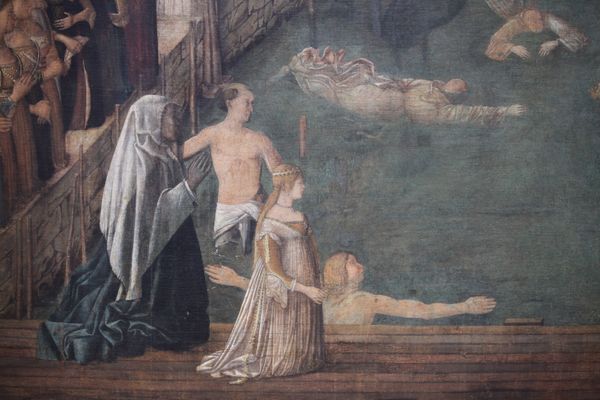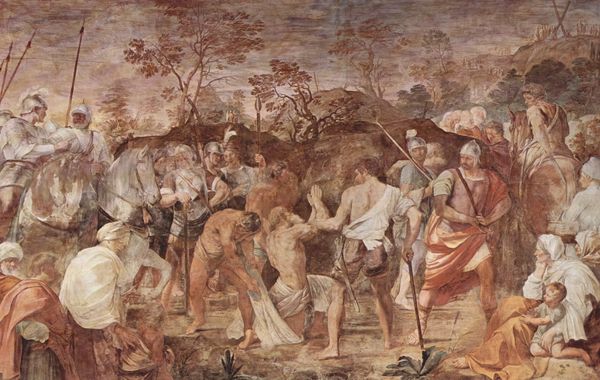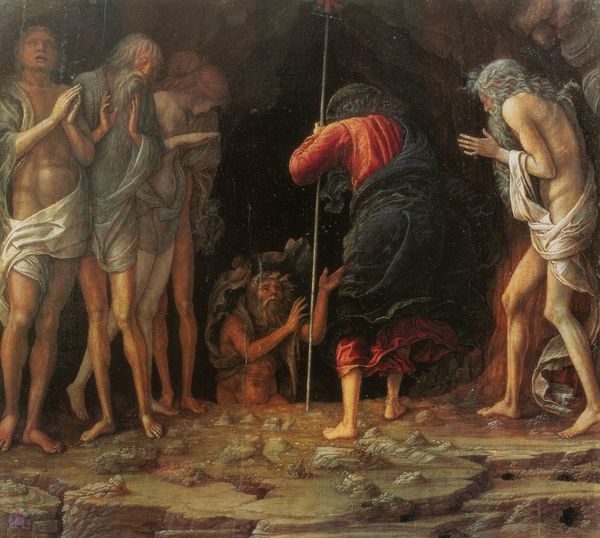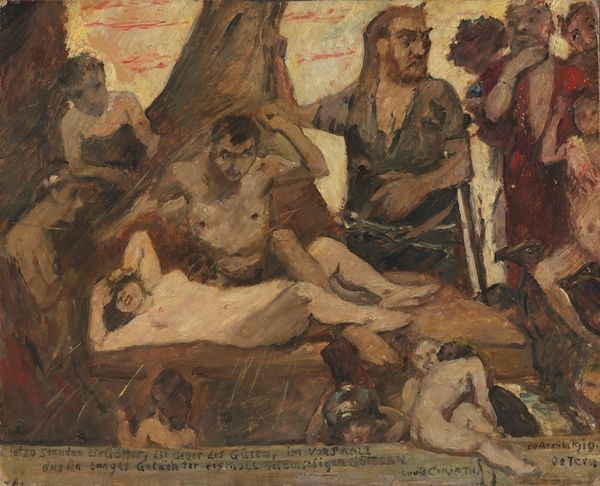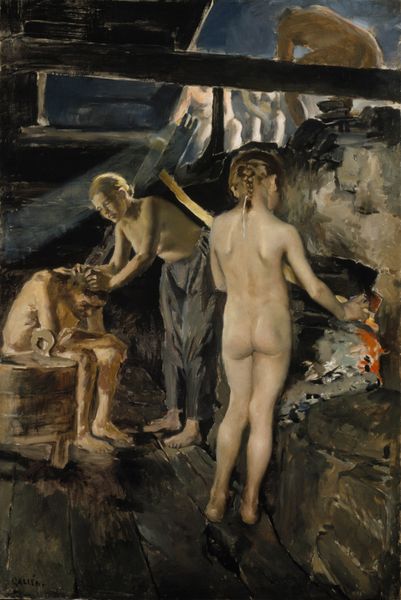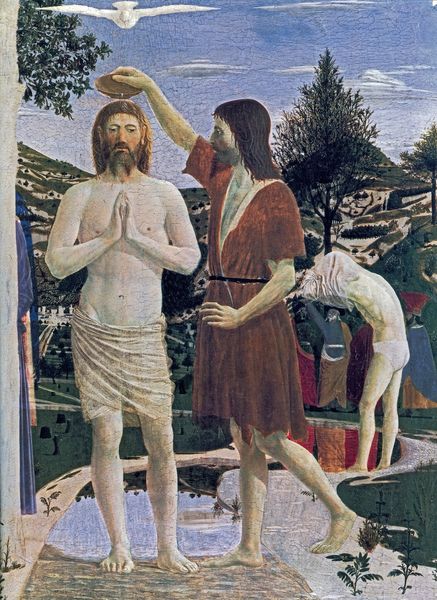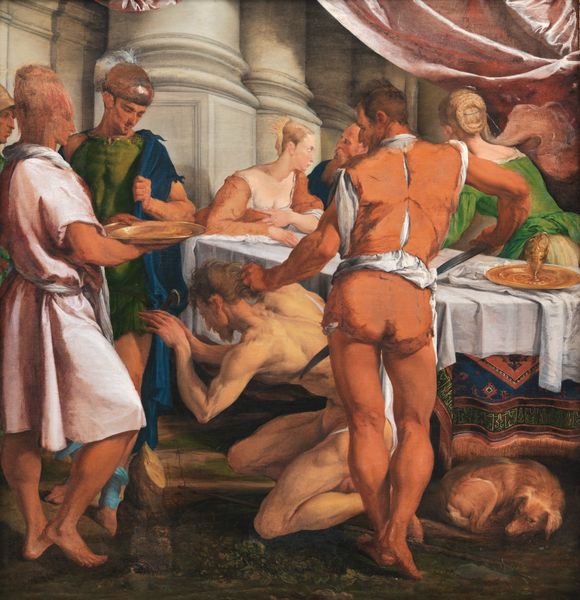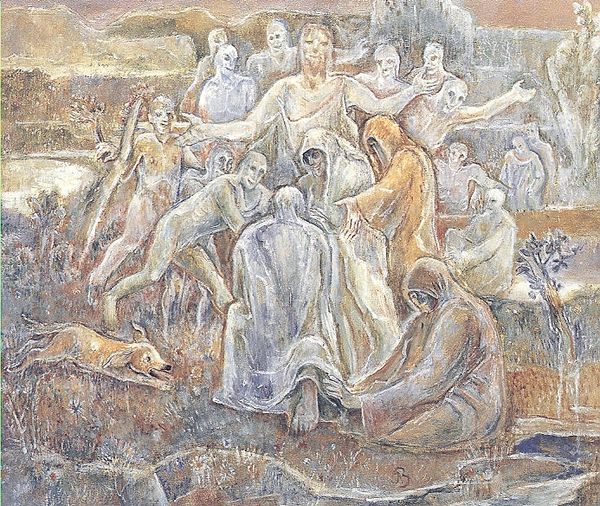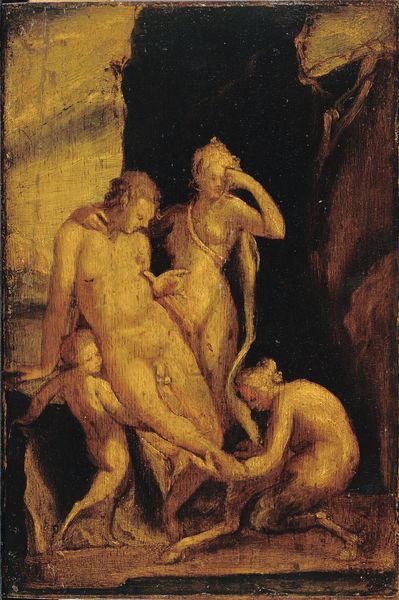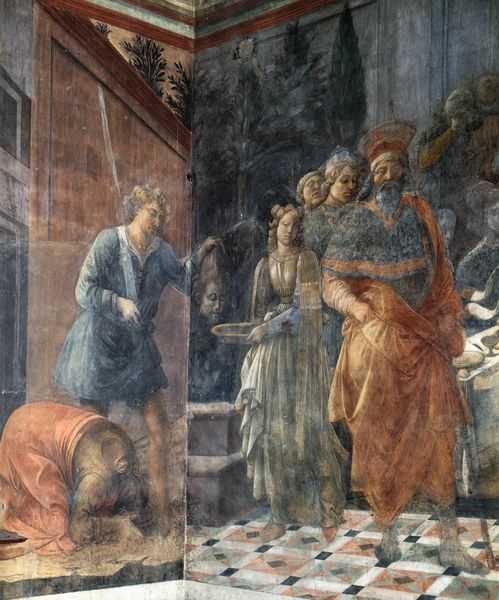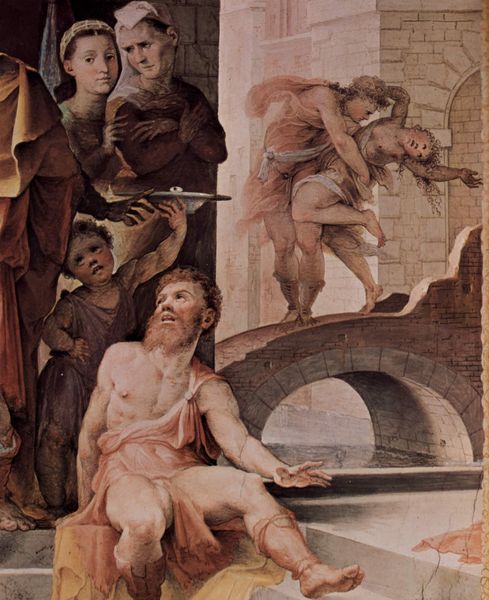
painting, fresco
#
narrative-art
#
painting
#
figuration
#
fresco
#
oil painting
#
christianity
#
mythology
#
painting painterly
#
history-painting
#
italian-renaissance
#
christ
Copyright: Public domain
Curator: It feels so still, so composed... almost geometric in its arrangement. Editor: Exactly. We are looking at a detail from Piero della Francesca’s “Death of Adam,” a fresco painted around 1452, currently adorning the Basilica of San Francesco in Arezzo, Italy. Curator: The fresco technique is particularly interesting here; look at how the layers and the pigments interact with the wall's texture itself. It adds so much depth. And, speaking of depth, it seems that assistants would have needed to prep large sections of plaster each day so Piero della Francesca could quickly layer paint to capture the figures we see before they dried. What strikes you about the social context here? Editor: What jumps out at me is the prefiguration of Christ. We see Adam, nearing death, and according to legend, the wood from the Tree of Knowledge was used to construct the cross. Think about the ways trauma is often transmitted through generations, physically manifested by way of objects in a deeply intertwined pattern. The naked bodies further amplify these connections to early life. It is especially powerful how Adam’s body is centrally situated to become one with his demise. Curator: That focus on corporeality aligns with a renewed interest in the human form during the Italian Renaissance. Think about the revival of classical sculpture. It also speaks volumes about the societal fascination with mortality, both literal death and our own slow decay that ends similarly. How are those raw materials – earth pigments, water, lime, plaster – made to speak so eloquently to such complex themes? The hand of the artist feels ever-present in these deliberate gestures across surfaces. Editor: I agree. I’m particularly interested in that figure kneeling, perhaps an angel, behind the elder Adam. In our contemporary moment, questions about what it means to “care” for others in the midst of bodily degradation, loss, and death remains ever fraught, gendered, racialized, and fraught with other systemic, asymmetrical power imbalances. Who cares for Adam at the moment he nears death, who even gets to die well? Curator: A powerful point. Fresco production in and of itself relies on communal labor, as craftspeople prepared the walls, ground pigments, and mixed plaster in service of Della Francesca's vision. Perhaps we could even draw parallels to our systems of labor and collaborative production today… Editor: A haunting fresco in the way it interweaves social context with religious symbolism. Curator: Indeed. The beauty lies as much in the earthly processes of its making, in its connection to earthly materials, as in the heavens.
Comments
No comments
Be the first to comment and join the conversation on the ultimate creative platform.

